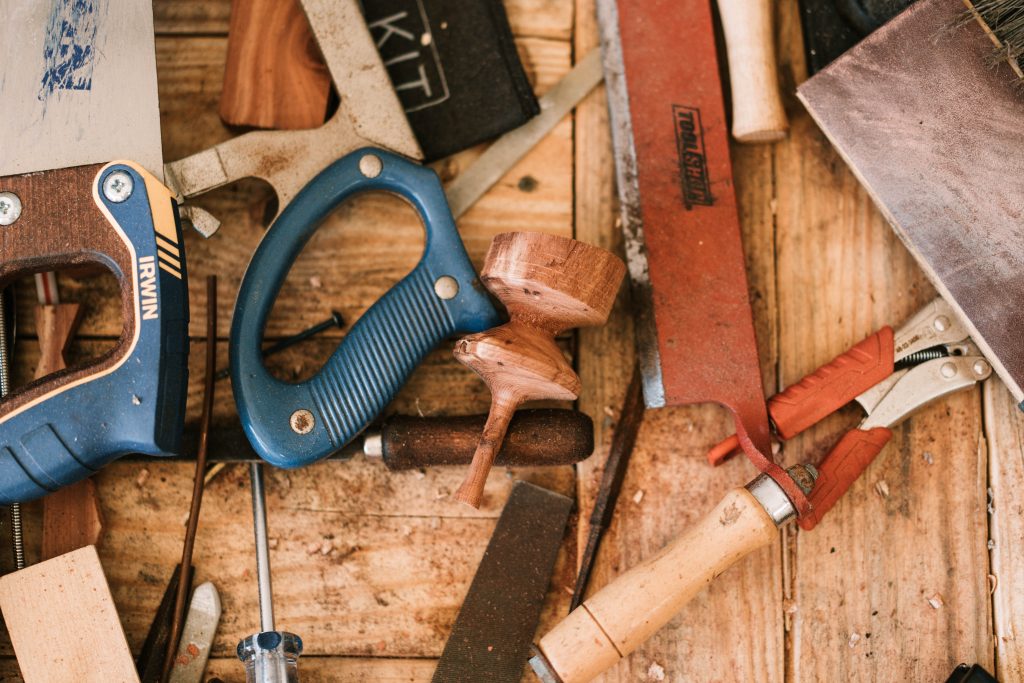
One of the core benefits we want to provide with teamshufflr is having fun while learning to collaborate with other people. Every day of our lives, all of us have to rely on other people, be it for their knowledge, experience, skills or tools. Just think of bus drivers, nurses, dentists – no one could do all of their jobs by themselves at once. So what could be more fun than exploring the benefits of working together – with teamshufflr? So we’ll show you a fun team building exercise you can use to fuse your team together and promote collaboration.
Setting up the team building
For this exercise, all the participants will become carpenters’ apprentices and since we’re working with lots of props, it would be best to do this somewhere with some space. If you don’t have that much space or planning time, there is a shorter “in-the-office-version” of this described below. To start, we divide the students or workshop participants into teams of six – using our teamshufflr app, of course. Then, each person gets a tool. In the first round, each team member has one of the following different tools:
Team member 1: Hammer
Team member 2: Nails
Team member 3: Rope
Team member 4: Saw
Team member 5: Screws
Team member 6: Screwdriver
Building bridges
Now the groups get a stock of building material assigned, consisting of 12 planks of wood, and the task to build a stable bridge to cross an imaginary river. The assigned time slot is about 45 minutes. But of course this is a constraint that you can change according to your specific setting – more time means more meticulously planned bridges, less time makes for more efficiency. Depending on the building materials you have provided, “stable” could mean that at least one member of the team needs to be able to walk across this bridge, or that it needs to hold up for at least a minute when you put 20 – 30 kg of weight on it.
After this first task has been completed, we proceed to the second round, and here’s the catch: now we shuffle the teams again, so that some tools will be overrepresented in one team and underrepresented in another. Then we provide another stock of building material and set those new teams to finish another task: building a chair with the tools available in their respective teams. Again, 45 minutes are the time slot and the chair should be stable. Will they find a creative solution and adapt to the given tools? Will they suddenly value a tool they thought inferior to their own in the first round? To add another twist and make it a better team building experience for the whole company, you could even allow the collaboration and trading between teams.
Variations of the game
For the “in-the-office-version” you substitute the building materials with sheets of paper and the tools with pencils, threads, scissors, scotch tape, glue, and paperclips. These props should be available within any office setting and you’d need less time to build the bridge and the chair – about 20 minutes per round.
If you feel like the participants would like to have a contest, you can also introduce a scoring system for both tasks. Stability is counted with three points, and the design with two points (extravagant designs are rated higher – this is a highly subjective matter). This way, there will be more varying outcomes in shape and form.
This idea of changing the preset of given tools for each team can be translated to different topics, which we will pick up in later blog post ideas. Think of communication if just one team member can receive mails, another send them, and another write them. Think of using different shaped lego pieces and challenge the participants to build with them. Or stay in the apprenticeship areas and change to tools for a baker, a roofer, a physician…. The possibilities are endless. Please write us a message if you used this idea, we’re excited to hear how your team shuffling was received! And make sure to check out our other team building & activation game ideas and our Cookbook Creator!

